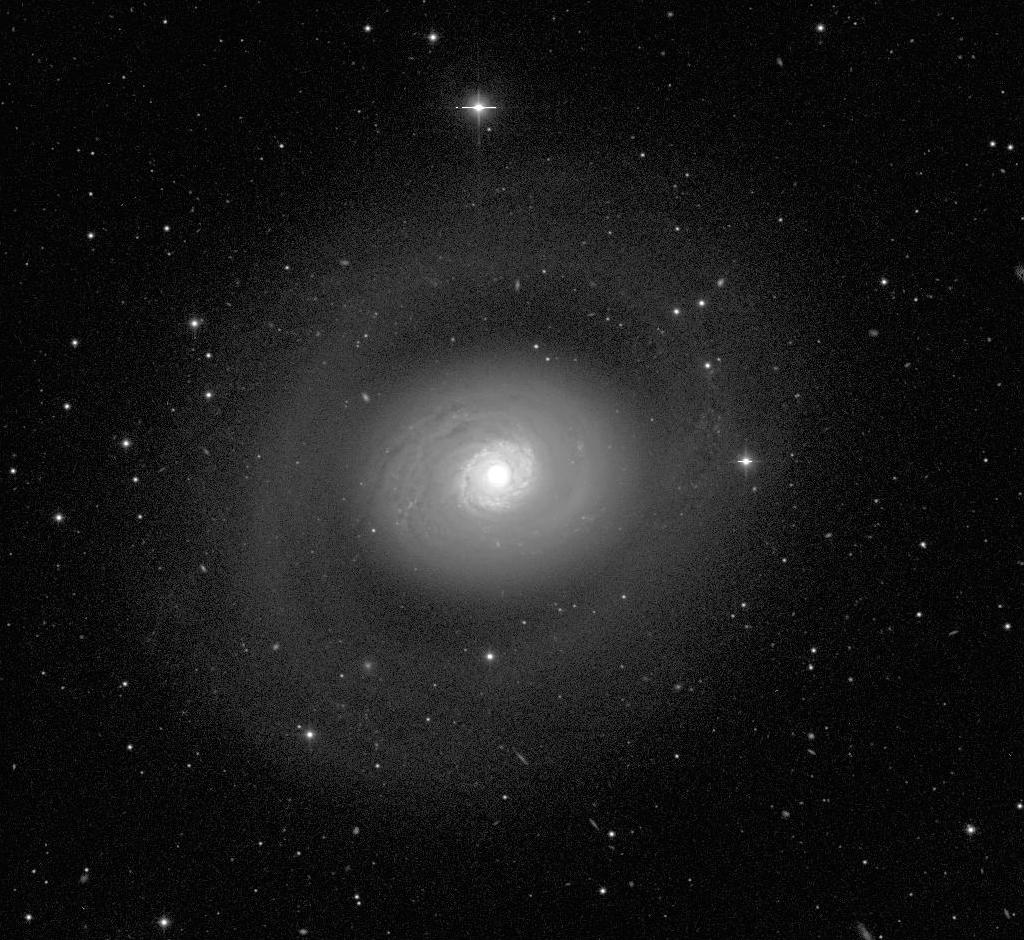

De Vaucouleurs Atlas Type: (R)SAB(rs)ab
Filter: B
Telescope: KPNO 0.9-m
North up , East left
Field Dimensions: 23.2 x 21.3 arcminutes
RC3 Type: (R)SA(r)ab
RSA Type: RSab(s)
Surface Brightness Range Displayed: 17.0-26.0 mag per square arcsec
Absolute Blue Magnitude: -19.8
Elmegreen Spiral Arm Class: AC 3
De Vaucouleurs Atlas Description:
This spectacular nearby galaxy has an extremely large range of surface brightness, very unusual for any galaxy. The morphology is characterized by several remarkable features. First and foremost is the extremely bright inner star forming ring, which is unrivaled in any other galaxy in this atlas. The ring is small compared to the size of the galaxy, but it is large enough to be studied in great detail. The ring has a strong spiral character, which we recognize with the underline notation .
Outside the inner ring is a bright oval disk zone containing weak, tightly-wrapped spiral features. Bosma et al. (1977) noted that the apparent major axis of this zone is not aligned with the line of nodes of the HI distribution or with the major axis of the outer disk. They suggested that this bright inner zone is an intrinsic oval, or broad barlike feature. Kormendy (1982) and Kormendy and Kennicutt (2004) suggested that this kind of feature can be just as important to galactic dynamics as a conventional bar, because of the great amount of mass involved. We recognize the oval with the classification SAB. The galaxy is also now known to have a small central bar (Mollenhoff, Mathias, and Gerhard 1995). This bar is in a region that is so bright that it is largely saturated in our images.
Beyond the oval, a faint, very extensive outer ring is found, the largest example of this type of feature in the sky. The ring has a fairly sharp inner edge, but fades very gradually at large radii.
The morphology of NGC 4736 must be very rare because the authors could not find another example like it even though all have inspected thousands of galaxies. The extreme brightness and proximity of the galaxy have made it the subject of many studies, most of which have focussed on the star-forming inner ring . In an early study of the kinematics of the ring, van der Kruit (1974) suggested that the ring is expanding with a velocity of 30 km/s and hypothesized some kind of central explosion for its origin. Later, Buta (1988) studied the kinematics and showed that a Lindblad dispersion orbit could equally well describe the ring motions. Several dynamical studies have shown that both rings may be interpreted as Lindblad resonances, driven by the massive oval between the rings. The inner ring may be an ILR feature while the outer ring may be an OLR feature. These would then be analogs of the nuclear and outer rings of barred galaxies. The equivalent of an SB inner ring , if present, would lie along the rim of the oval. A re-examination of some of these issues is provided by Munoz-Tunon et al. (2004).